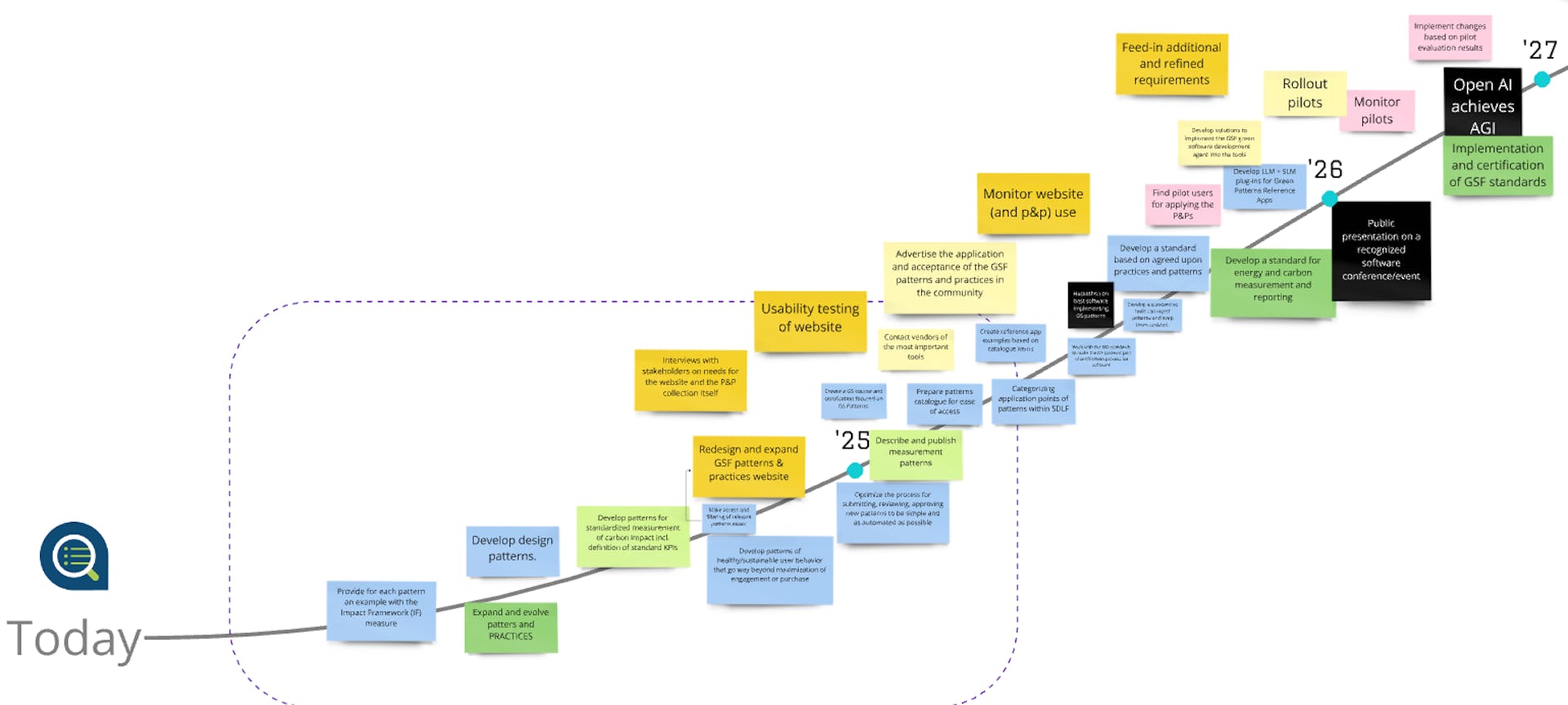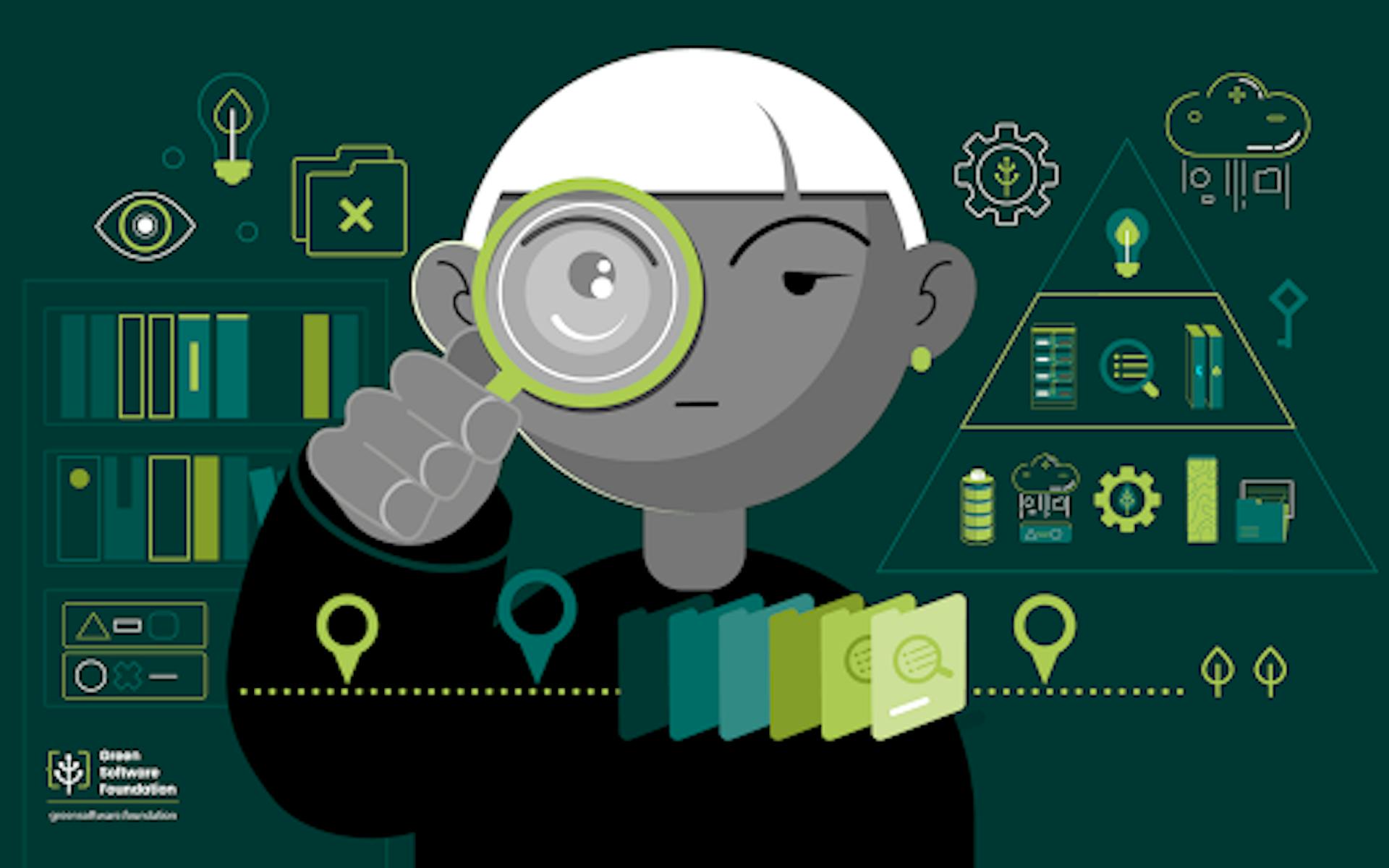Project Overview
Early in our journey, members like AVEVA and Mastercard recognized that if we are to succeed in significantly reducing software’s carbon emissions, we need a knowledge base of trusted guidelines. In an effort to audit what was available, it became clear that one of the biggest challenges was finding resources, which were scattered across various publications, articles, and videos.
In response, we launched Green Software Patterns in 2022. The Catalog offered the first batch of examples of how to apply a set of competencies to build greener software–50 patterns covering AI, Cloud & Web. Each pattern went through a review and consensus process, ensuring relevance and applicability across diverse industries and use cases.
Early in 2024, members including Daniel Lazaro (AVEVA), Denis Angeletta (NTT DATA), Evan Price (Mastercard), Felipe Almeida (Microsoft), Filippo Galeazzi (Shell), Franziska Warncke (NTT DATA), Greg Rivera (CAST), Ioannis Kolaxis (Accenture), Joseph Rossetto (AVEVA), Karthikeyan Kumar (Shell), Klaus Graefensteiner (AVEVA), Michael Mueller (re:cinq), Paula De Matos (AVEVA), Philipp Quaet-Faslem (Siemens), Simon Thurman (Microsoft), Carolin Rubner (Siemens), Sean O'Keefe (Microsoft), Santiago Fontanarrosa (Globant), and Thomas Lewis (Microsoft), participated in a Design Thinking workshop focused on evolving the Green Software Pattern project. Members were eager to make the catalog more relevant to a larger audience and individual roles, providing real-world examples and guidance on implementation.
Now, we’re introducing you to their insights, observations, and guideposts that will shape the Catalog’s evolution.
Solution & Scope
Participants were encouraged to approach the Catalog holistically while considering the information architecture and diverse needs of globally dispersed software teams. Rather than reaching an endpoint and evaluating the existing patterns, members prioritized establishing a strong foundation for developing a roadmap and enabling the project’s scaling up. With this aim, participants also had specific goals focused on growth and establishing the foundation as the authority on green software patterns.
The workshops welcomed inputs from practitioners and Subject Matter Experts (SMEs) in software and data engineering, cloud technology, research and development, solution architecture, user experience, and product and program management. This diversity contributed to unique perspectives that represented the needs of a broad range of users, shared through Miro boards.
User Experience and What Defines It
The starting point was to define potential users, scenarios, and locations where the Catalog might be relevant. This was achieved through scenario mapping and creating user-specific design challenges to further guide the design processes.
Identified challenges were broken down into eight distinct themes:
User Experience Design
Education
Strategy
Advocacy
AI
Measurement
Enterprise Architecture
Infrastructure & Architecture
A better understanding of the potential limitations and how the users might interact with the Catalog laid the ground for defining user-specific “jobs to be done,” such as:
“As a CTO,” every time I “want to understand how to make my existing software applications greener,” I need “provide clear guidance to my teams on which applications to decarbonize and the priority patterns to implement” but “lack of knowledge about green patterns and how they apply to my applications” gets in the way, and that means “we end up making poor choices based on lack of information or we do nothing.”
Or
“As an Architect,” every time I “modernize an app (e.g., migrate to the cloud) I need a way so simply and easily get the SCI score,” but “the time it takes” gets in the way, and that means “it is given less (no) focus.”
Understanding user needs and the problems they want to solve, members had a clear starting point for mapping “jobs to be done.”
Green by Default
During the workshops, members discussed expanding the Catalog’s reach and strengthening its role as an authoritative resource, which were synthesized into four insights:
The Developer experience needs to be green by default. Green software patterns should be easy to embed into practitioners' tools–including software development Integrated Development Environments, DevOps, repos, and management tools–to enable sustainability improvements in the design phase.
Patterns must enable sustainability-led informed decision-making. While many important choices are made during the design phase, the Catalog needs to provide guidance on what patterns to implement through use cases.
Measurement matters. Organizations worldwide should be able to automatically assess the green impact of their software and continuously apply green software patterns using tools like Impact Framework (IF) to measure emissions before and after implementation.
AI is a key enabler. AI can be a powerful agent to advance sustainable software development. However, the environmental impact of AI itself must be measurable and, ideally, carbon-neutral.
Roadmap
In the final stage of the workshop, participants reflected on each step to define their vision of the “Green Software Nirvana” for 2030 and outlined a strategy to achieve it.
Green Software Nirvana
Green Software Patterns integrate into all major tool environments, ensuring automated, default application, and real-time impact measurement. With AI-driven analysis, forecasting, and optimization, Green Software Patterns allow for improved decision-making throughout the software lifecycle–design, implementation, and use–to minimize emissions.
Disclaimer: The vision above only reflects the perspectives of the workshop participants. It does not represent a consensus view of the project team or the Green Software Foundation.

How to Contribute
As the Catalog grows and evolves, we're excited to announce that GS Patterns v2 will include persona-based and behavioral patterns. We would love to have your contributions to make it even better. Join us in shaping the future of this project!
To offer your support, join the GSF as a member.
Project Leads: Franziska Warncke (NTT DATA) and Liya Mathew (Goldman Sachs) are driving the vision and execution of GS Patterns v2, aiming to make it more actionable and impactful for the community.
A special thank you to Peter Wadsworth (Innovation Consultant) and Russ Trow (GSF) for designing and facilitating these workshops.
This article is licenced under Creative Commons (CC BY 4.0)
